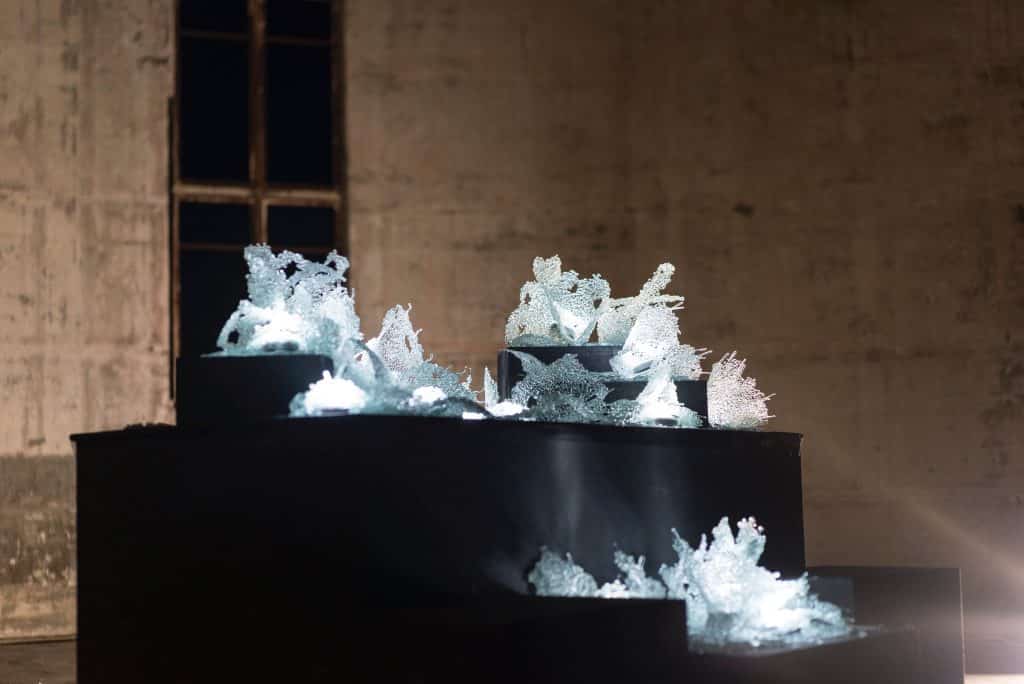Ngaio Fitzpatrick is using her time as a visiting fellow with ANU Climate Change Institute (2017-2022) to explore the deathly effects of the Anthropocene upon humanity, wildlife ecosystems, and various biosystems across the planet.
Fitzpatrick’s footprints in this realm are delicate, serene, and ghostly – exemplified by ‘Requiem for a Reef’, a visual art installation and musical performance. It united the fragility of glass and a soundscape in collaboration with composer Dr Alexander Hunter. In an experiment of light, and darkness, the instability of the Great Barrier Reef is represented in interactions.

Performed under a full moon on 13 November 2019, the collaborative artwork took shape in the open-air observatory on Mount Stromlo, Canberra. The full moon plays an essential role in both ‘Requiem for a Reef’ and the real reef. “There is hope every year that the Great Barrier Reef’s coral will spawn on the full moon in November,” Fitzpatrick shares.
For the artwork, the light from the moon activates the glass installation; with the melody from Hunter bringing the sounds from the reef. The composer used vibraphones to echo the ambience, the music generated by chiming crystal glasses and marbles etching on stone, mirroring the ocean’s crackling vibrations.
Fitzpatrick’s artwork reflects the texture of the curling ghosts of the reef, represented by shattered sheets of pebbled glass; ethereal in appearance. “My work here is stripped of colour, to symbolise what we stand to lose,” Fitzpatrick muses. “It is surrounded by the glorious colour of nature.” The artist invites us to try to imagine a world where there is nocolour— a world of coral bleaching and burning forests.
According to the National Ocean Service, bleaching is the result of stress “by changes in conditions such as temperature, light, or nutrients; they expel the symbiotic algae living in their tissues.” The coral can survive these extreme weather changes, but only if they are allowed to regrow the marine algae called zooxanthellae.
Fitzpatrick brings these considerations and her background in environmentally sustainable architecture, to inform her climate change-based practice through site-specific installation, performance, video, and collaborative experimental music interactions. She believes that art can draw attention to the human relationship to the natural world, in the context of climate change.
‘We live in a Post-Truth and indisputably warming world,” the artist shares. “Science gives us hard data, politicians procrastinate, and economists advocate infinite fiscal growth, all within a planet of finely balanced ecosystems and finite resources.”